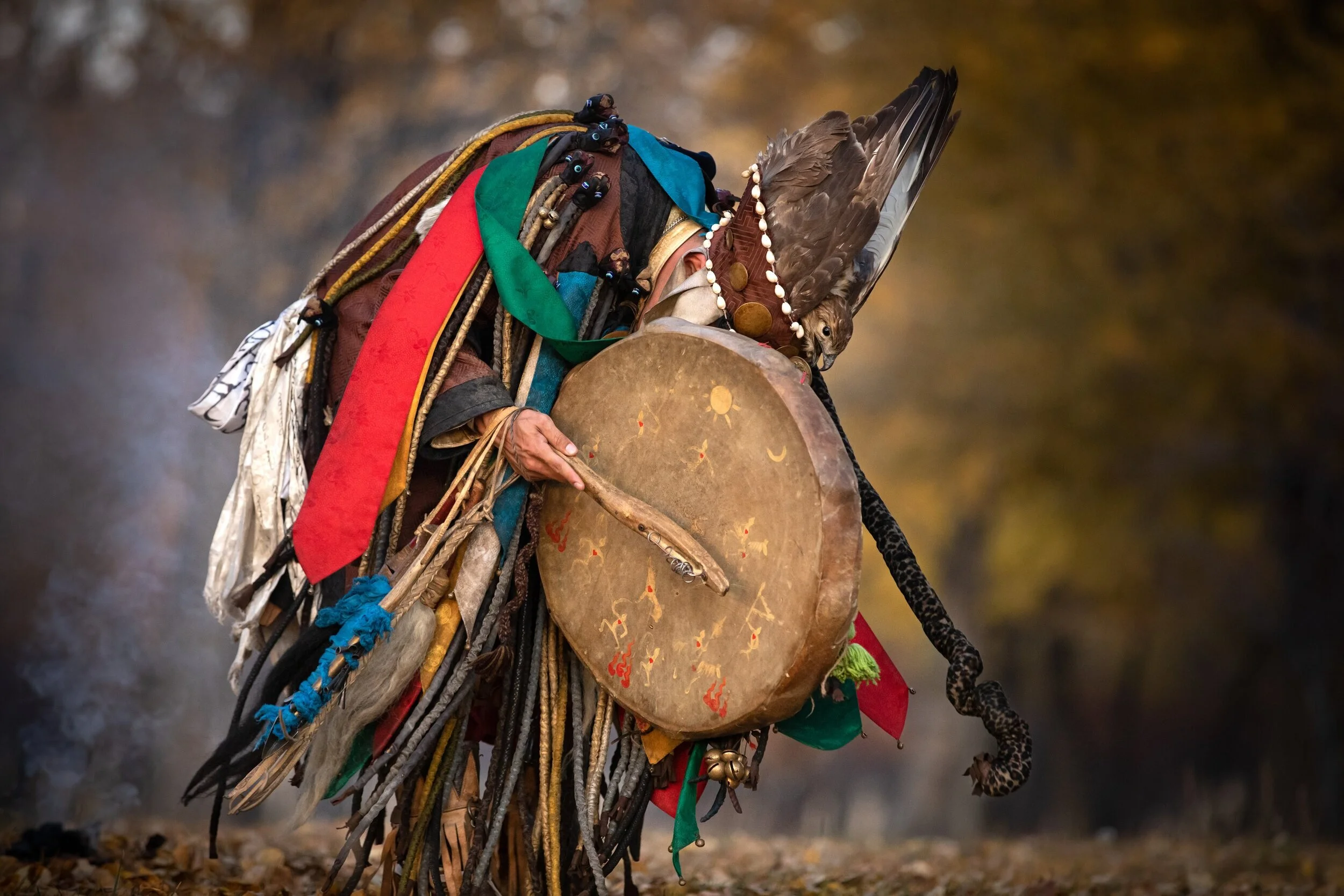How does a shaman go through initiation?
Initiation is big topic when it comes to shamanism, and there are a lot of misconceptions. Many people want to know if they can just go through an initiation ceremony to become a shaman. A lot of people don’t know what initiation does. I hope to break things down for you so there will be a clearer understanding. I welcome you to contact me with any questions that arise.
Initiation, as the name implies is a beginning. Birth is a type of initiation. I also see death as an initiation. Many life passages can be viewed in a similar way.
Shamans are Initiated By Spirit.
The way that shamans are selected, called, and trained varies in different cultures. There may be years of apprenticeship, mandatory teachings, vision quests, etc. before someone is allowed to serve as a spiritual functionary in a given culture.
Ultimately, a shaman is initiated by spirit itself. This means that the shaman has worked with spiritual forces and has become a clear channel for spirit. We often refer to this as “becoming the hollow bone”
The hollow bone metaphor is a good one. One has to clear out the “junk” in order to become a clear pathway for spirit to act in this world. When I perform a healing ceremony on a client, for example, I am not doing the work. I am stepping out of the way, dropping my ego, and allowing spirit to work through me to do the work. This level of surrender to spirit does not come easily to most people. It did not come easy to me in the beginning.
An Initiation Ceremony Is Not Necessarily an Initiation
A ceremony is a ritualistic event marking something special. A wedding is a ceremony marking a commitment by two people. A ribbon-cutting ceremony may mark the opening of a new business. Ritual, in its case, means a symbolic action. The actual cutting of a ribbon is a ritual symbolizing the opening. Exchanging rings during a wedding is an action symbolizing shared commitment.
In my life, I have participated in a lot of initiatory ceremonies. Going back to childhood, I went through ceremonies in Cub Scouts and Boy Scouts. There were ceremonies for joining certain organizations.
During my shamanic training, I participated in a two-year initiatory training. There were lots of ceremonies, rituals, and practices. They were all meant to help the participants to become that hollow bone. The ceremonies themselves were intended to create the conditions for spiritual change. It was the spiritual change itself that was the real initiation.
Shamanic Initiation Can Be Dramatic And Unpleasant
During my training, I shared the following analogy with my teacher, who agreed that it was spot on. Initiation, for me, was like putting your life in a snow globe, then putting it in a paint mixer in a hardware store to shake the crap out of it.
Lots of “stuff” happened to me during that time. Lots of things also happened to my peers as well. Relationships ended, started, ended. Jobs changed. There were health crises. During this time, nothing felt like it was on stable ground.
In many shamanic cultures, to practice shamanism, one must have gone through a “shamanic crisis.” This could consist of lots of things, from a near-death experience to being hit by lightning, to a self-induced ordeal. Fortunately, in my classes and mentorships, I don’t recommend my students try to go get hit by lightning.
The dramatic experiences that go with initiation are actually spirit working on the prospective shaman. Going through these ordeals and crises shakes up and reconfigures the spirit. It helps to clear out the junk that has been building up for lifetimes. Think of sifting flour. If you just dump flour into the sifter, some will fall through, but the rest will just stay in the sifter. You have to shake the sifter for the rest of the flour to come through.
Initiation in Modern Shamanism
Though the core practices of shamanism I practice are at least tens of thousands of year old, I might describe my practice as modern shamanism. I live in a modern culture. I do not have the same concerns as our hunter-gatherer ancestors, and I elected to study shamanism.
In many cultures, the title of shaman might be inherited by bloodline. Potential shamans might be chosen due to birth defects, or auspicious events close to their birth. They might be called by spirit by having what we would call a mental health crisis.
This is not say I haven’t been initiated. I went through a lot of crisis. I trained for years. I had to apply and be accepted by my teachers every step of the way. I put in a lot of self work. Shamanism is much more about becoming than it is about doing. If you are initiatiated, it changes everything about you.
What if I Want To Become a Shaman?
First, in my tradition, I never refer to myself as a shaman. This is considered bragging, and bragging is no bueno. Trust me that the spirits will take you down a peg. I use the term shamanic practitioners. If other people refer o me as a shaman, that’s OK, it’s just not a title I use to refer to myself.
But there is also a really important lesson here, You have to approach the spirits with confident humility. Bragging and hubris are indicators that you have work to do. I have a lot of people who approach me with huge egos - “I am ordained by the gods to…etc.” This doesn’t mean they might not be cut out to learn shamanism, but there’s going to be a lot of work to do, and initiation might be very unpleasant. Spirit will take you down to the level where you either learn or walk away from the path.
I believe that you are either called or you are not. It’s like training in martial arts. Maybe one out of every five hundred people who take a first-class lasts long enough to earn a first-degree black belt. Out of the people who make that, maybe one out of five hundred earn a second degree. I won’t get into the schools that water things down and make it fast and easy to earn belts.
Most people who take an intro to shamanism class will go no farther with it. And that’s totally fine. They will learn some great skills that they can use for the rest of their lives. Some may go on to do an apprenticeship, even fewer will continue past that.
The process of self-selection is fine. There is no judgment for people who get a taste of shamanism and decide it’s not for them or feel like they’ve had enough at some point.
If you go through an initiatory crisis, dedicate years to training, and stay very humble and still want to practice shamanism, this may be your path.
The nice thing about modern shamanic practice is that it is easy to begin. From time to time I teach 2-day introduction to shamanism classes. I have even taught online recently. I also offer flexible mentorships for one on one training. Either are easy ways to learn the fundamentals and help decide if the practice is for you.
Note: I plan on offering full apprenticeships starting in 2022 (depending on the pandemic situation).
How do you Become a Shaman?
I’d like to talk about how one becomes a shaman, but I have to clarify something first. In my tradition, one does not call oneself a shaman. When I refer to myself, I mostly use the phrase “shamanic practitioner” as I truthfully am a person who practices shamanic spiritual techniques.
I also want to make clear that indigenous shamanic cultures are extremely varied. How they select and/or train people who take the role of the shaman is different culture by culture. While I have extensive training, I am not an anthropologist and don’t want to speak about cultures I am not familiar with.
I will do my best here to draw out some commonalities.
Choosing Who is a Shaman
In some cultures, the role of the shaman is hereditary. A person is selected and trained by parents or grandparents. In other cultures, a shaman is born with certain signs, perhaps a birth defect of some sort. In others, one has to have passed through a traumatic ordeal, like being struck by lightning.
Ultimately, I believe that spirit chooses. Whether you are born into a certain family, or struck by lightning, or born with birth defects in the cultures that use these selection criteria, spirit is nudging those it chooses onto the path.
Today, almost anyone can sign up for a basic course in shamanism. However, those who do not have a spiritual predisposition for the path, do not wind up sticking to it. I’ll talk about why in the next section on initiation.
A Shaman’s Initiation
Shamanic initiation is no easy ride. I have referred to it as putting your whole life into a snow globe and then putting that snow globe into one of those paint mixers at Home Depot. It’s going to shake things up.
It’s important for me to draw a distinction between initiation and an initiation ceremony here. I have participated in many different initiation ceremonies, all of them are very powerful. Some of them were intense and even frightening. But these were ceremonies that all had set beginning and ending points. They were also led and supervised by advanced practitioners - so there is a measure of safety.
But initiation on the shamanic path is an ongoing process conducted by spirit. It never gets easy. My take is that it is spirit breaking down old parts of you that are no longer useful so that you can become the proverbial “hollow bone”. Think of the way indigenous people traditionally made canoes by burning and scooping out the centers of logs.
For me, initiation involves facing parts of myself hidden away in the shadow, having my life turned upside down from time to time, and reexamining my relationship to everything.
There’s a scene in Empire Strikes Back where Luke fights Darth Vader in the swamp of Dagobah. Luke tells Yoda, “I am not afraid.” Yoda responds knowingly, “you will be.” When Darth’s helmet is struck open it reveals Luke’s face underneath. This is a great representation of the shadow aspect of the self, experienced during shamanic journeys.
Ultimately, just as spirit chooses the shaman, spirit initiates the shaman. Even if outward ceremony is involved, spirit is doing the real work.
Shamanic Training
I think I have laid out a good case of why someone can’t just take a class or read a book and be a shaman. However, training is necessary to practice shamanic healing.
Indigenous shamanic cultures will each have their own way of conducting training. Some have an apprentice model, some training is conducted by elders or family members.
My own path involves extensive training. I have completed a year-long apprenticeship in shamanism, a two-year initiatory program, specialized topic training, and am about to start two years of advanced teacher training. For me, the learning never stops.
For my own students, I recommend they don’t take on clients without completing a year of apprenticeship, and training in soul retrieval. Even then, a practitioner may run into things he or she hasn’t trained for and would need to refer to another practitioner
If you’re interested in shamanism and feel called to the path, I recommend starting with an Intro to Shamanism and Journeying class. This is normally an in-person class given over a weekend that will give you a taste of shamanic practice and teach the basic skill of journeying. It’s also a prerequisite for an apprenticeship and some other classes.




